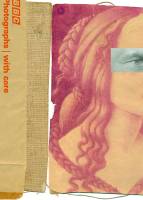| Abstract | Making Ways is a visual essay produced for the Journal of Visual Culture’s Ways of Seeing 40th Anniversary Issue, v11 n2.
The images are collaged from archival material belonging to film-maker Michael Dibb, who directed the television series, Ways of Seeing (1972), and went on to produce an eponymous book publication in collaboration with John Berger, Sven Blomberg, Chris Fox, and Richard Hollis.
The Journal of Visual Culture marks the 40th anniversary of John Berger’s 'Ways of Seeing', the 1972 BBC television mini-series and adapted book with a special issue edited by Raiford Guins, Juliette Kristensen, and Susan Pui San Lok. Berger's book, now part of the Penguin on Design series which includes Sontag’s 'On Photography' and McLuhan’s 'The Medium is the Message', has been a monumental influence on the fields of art history, cultural studies, design, visual communication, and, of course, visual culture studies. With an editorial by Guins, the issue includes contributions from Mieke Bal, Geoffrey Batchen, Lisa Cartwright, Jill Casid, Laurie Beth Clark, Clive Dilnot, Jennifer Gonzalez, Martin Jay, Guy Julier, Louis Kaplan, Peter Lunenfeld, Griselda Pollock, Adrian Rifkin, Vanessa Schwartz, and Marita Sturken. It features an interview by Juliette Kristensen with the programmes’ and book’s producers Mike Dibb and Richard Hollis, as well as a photo essay by Susan pui san Lok, that draws on Dibb’s personal archive to highlight the televisual project’s collaborative production and material traces. As the Journal’s Events editor, Lok also commissioned five photo-essays that take up some of the book’s enduring themes: Julian Stallabrass continues the circuitous critique of looking, desiring, and selling, into the realm of subvertising; Sonia Boyce plays on the relay and duplication of eyes and lenses, rotating around and with their at least doubled subjects; Ming Wong shifts centres and perspectives, transposing the intermingled dreams of advertising and movie industries from 1950s Hollywood to 1950s Singapore, and so-called West to East; John Timberlake alludes to the politics and disavowal of climate change, hinting at pollutant incursions upon an urban picturesque; while Broomberg and Chanarin, in the face of saturated, mediatised and televised violence and death, implicate the viewer in ways of seeing and the politics of looking, then and now. |
|---|
